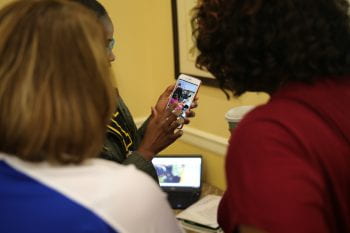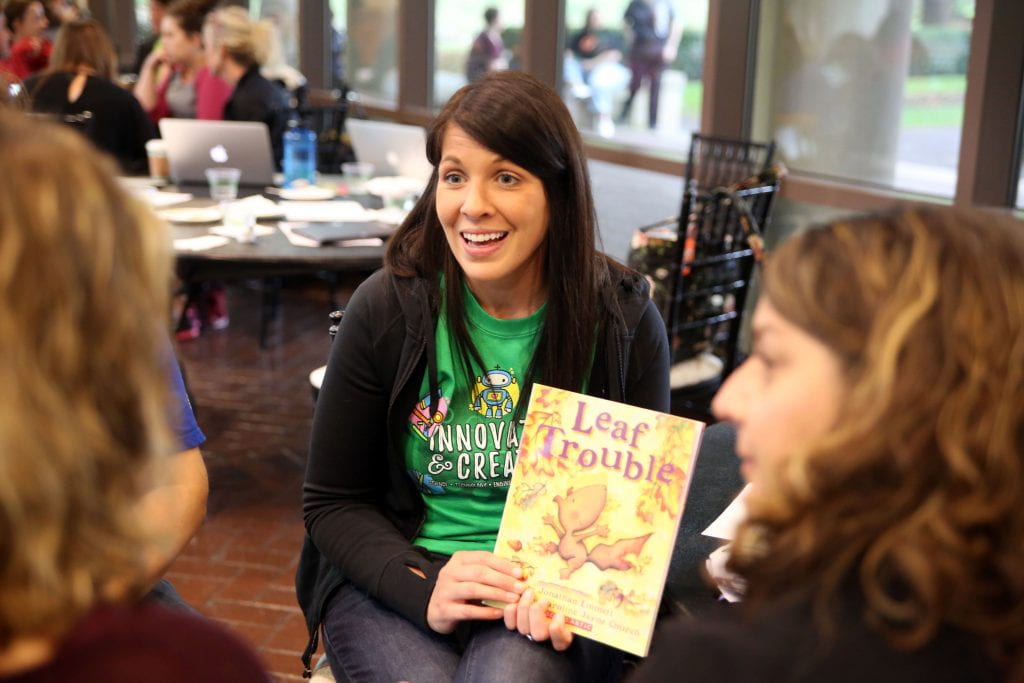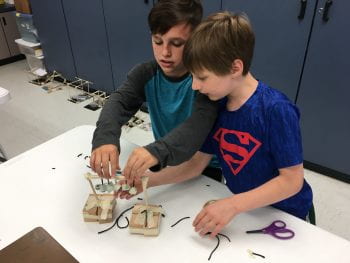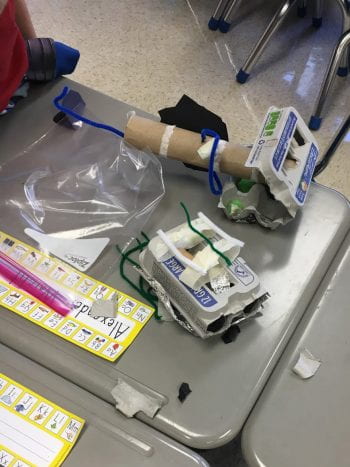This past summer nearly 160 educators from 13 school districts and two charter schools kicked off a yearlong professional development program called STEM Teacher Quality Initiative (STEM TQ).
Launched in 2011, STEM TQ has graduated some 500 teachers. The regional community effort aims to develop exemplary teachers who can provide quality learning in STEM, so the teachers, in turn, can pass on STEM concepts to students from kindergarten through middle school.
The program begins with a two-week summer institute — led by educators with the Institute for School Partnership at Washington University in St. Louis, followed by three professional development days at the end of each quarter, and six after-school sessions throughout the year.
This fall, the teachers were challenged to STEMitize one classroom lesson and report back the results. ISP spoke with four teachers who undertook the homework assignment with overwhelmingly positive results.
Redesign is a big part of the process
The students in Rungsee Suvansri’s class were learning about force in motion, so he tasked them with designing their own model of Newton’s Cradle, named after Sir Isaac Newton. This clever device is a series of swinging balls that can be found on many office desktops.
“Grouped in threes, the students were given free rein and challenged to think outside the box,” said Suvansri, a science paraprofessional at Rose Acres Elementary in the Pattonville School District. “They came up with some neat designs once they realized, ‘oh we don’t have to make an exact copy.”
Redesign was a big part of the process.
“Rarely does someone get it right the first time,” he said. “I explained to them that “these are all rough drafts and you might have to tweak it even 20 times.” This is the engineering process in action and one way to STEMitize learning by referencing a real world STEM application.
He gave the example of his iPhone, tablet and other electronic devices.
“See this phone in my hand,” he said to them. “They’re already testing the next one to come out. They’re not going to be done with this one. That’s how you have to think about it.”
STEMitizing his curriculum is a concept Suvansri has adapted from his involvement with STEM TQ. His big takeaway has been talking more about STEM careers in his projects. He’s made a concerted effort to connect jobs to the different projects the students are doing and reinforce student’s “STEM capable learning.”
“Oh, I can do that,” is what he hopes students walk away with. He reinforces this by giving students work titles. For this project, he was intentional about calling students lead builder, lead designer and lead tester.
“That’s one huge thing for me that I learned from STEM TQ, and will keep doing for a long time,” he said.
Once they figure it out they love it and don’t want to stop
After getting the assignment to STEMitize a lesson plan, Jasmine Jones knew exactly what her students would do. The School District of University City had just gotten grant approval for Lego Robotics and she was excited to have her students use them.

These aren’t regular Legos that children play with. They’re essentially parts – more than 800 pieces in fact – that are used to build a robot that can be programmed to do various tasks.
“Some of them loved it and some of them grew to love it,” said Jones, a fifth-grade science teacher at Jackson Park Elementary School.
It was challenging for the students because they didn’t have a set of rules to follow. They modeled their robot after one Jones built but other than that, they had to figure out how to program it on their own.
“Some kids were initially frustrated, but once they figured it out they loved it and didn’t want to stop,” she said.
Their minds are creating now
As a fifth grade resource special education teacher for the Hillsboro School District, Sheila Erb’s focus is on reading not science and math, but that wasn’t an obstacle to her efforts to STEMitize a lesson.
The assignment for her students was to create and design a game, and write directions for their game for someone else to be able to play. The options were limitless. Games could be indoor or outdoor.
“After engineering and designing and going through the process a few times they had to have someone else work their game as they had written it and designed it,” she said. “They had to go back if there was anything they needed to change, update or rethink.”
The also had to price the game. If the material they chose made the game too expensive they could exchange the material for a more cost-efficient one.
The lesson was a resounding success with the students. They were using the engineering process, applying math and literacy skills, and working collaboratively.
“They loved it!” she said. “Their minds are creating now. It’s a great way to connect those other areas within the reading program, especially some of the lower functioning students who excel more with their hands-on approaches. ”
She said integrating STEM into her curriculum was a lot easier than she ever dreamed it would be. A highlight was watching one of her students blossom during the lesson.
“He doesn’t socialize well and he doesn’t get involved. This was something that brought him out,” she said. “For him to give his input and build and design it with someone else and they accepted him, that was huge.”
It’s eye opening for them
Growing up Delilah van der Geest wanted to be a computer programmer. And with her dad’s help, she started learning how to program as a little kid.
“He bought me a little computer that allowed me to write code,” said van der Geest, a first-grade teacher at Blackhurst Elementary in the City of St. Charles School District. “It was a magic trick for me.”
Because of her background with science and technology, her principal recommended she participate in STEM TQ.
“I immediately said yes!” she exclaimed.
For her STEMitized assignment, she chose to read a book with her students called Leaf Trouble. It’s about two little squirrels who discover all the leaves falling off their beloved oak tree. The students brainstormed how they could help the squirrels collect all the leaves.
“It was amazing because they all had such different ideas,” she said. “I was very impressed because this was our first experience with the engineering design process. After they all constructed their prototypes based on drawings that they made. Then they had to label their sketches and show me which tools they would need.”
The students shared the designs with each other and provided feedback. She was blown away by the student’s level of comprehension.
“A couple of their designs had serious flaws they hadn’t thought about, I sat there and was completely astounded by their level of questioning.”
For example, one student said to another – you have solar powered buckets to collect leaves, what are you going to do at night, leaves still fall?
The student went back to work and rethought the device.
“It was such an amazing experience and a really great way to introduce the engineering process,” she said.
van der Geest also practices the STEM TQ strategies mentioned by Suvansari of calling the students by whatever job they’re currently doing.
“If we’re working on math we are mathematicians. If we are studying weather, we are meteorologists. When we’re doing engineering, we are engineers,” she said. “I think it really helps (for students) to see themselves in that role and picture their future. It’s eye opening for them.”
Registration for STEM TQ 2017-18 is now open. Click here for more information and to download the application.
The STEM TQ program is made possible by STEMpact, a collaborative network of St. Louis’ leading employers, as well as school districts and Washington University. ISP has been involved in the effort since its inception, providing meeting space, administrative support and guidance to STEMpact corporate funders.
January 2017 | By, Myra Lopez


